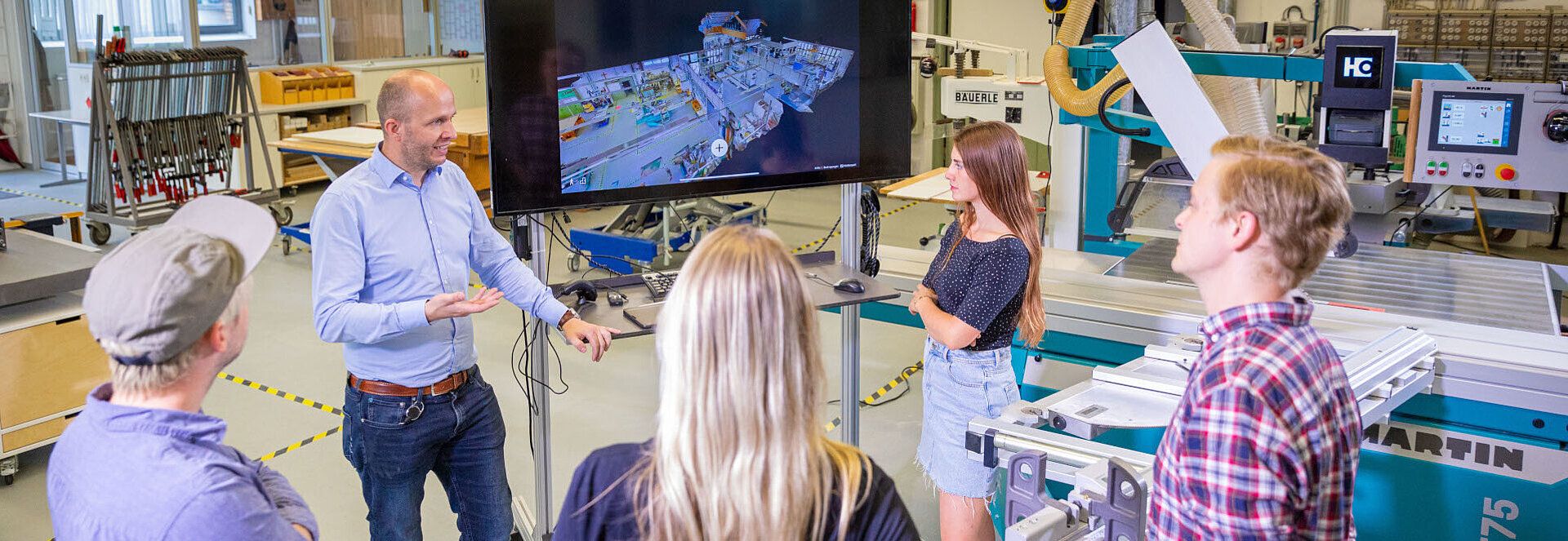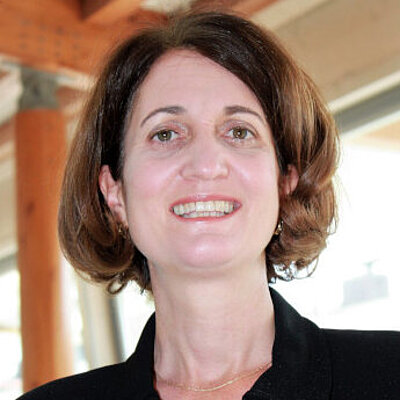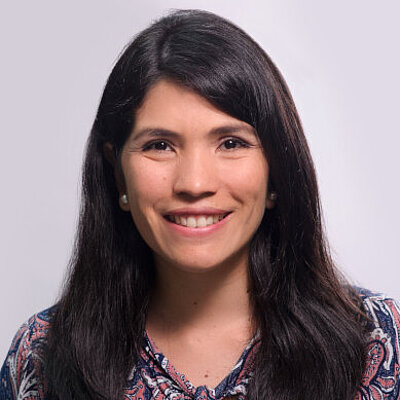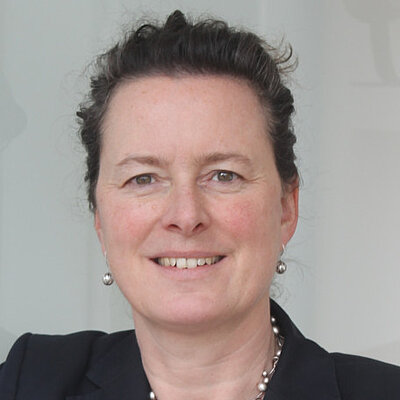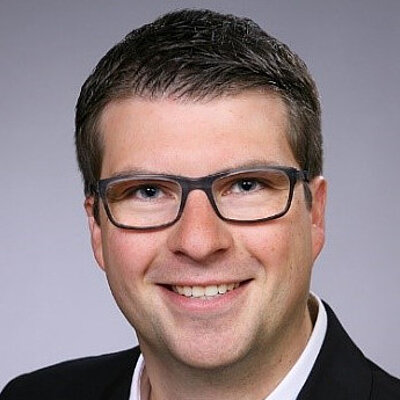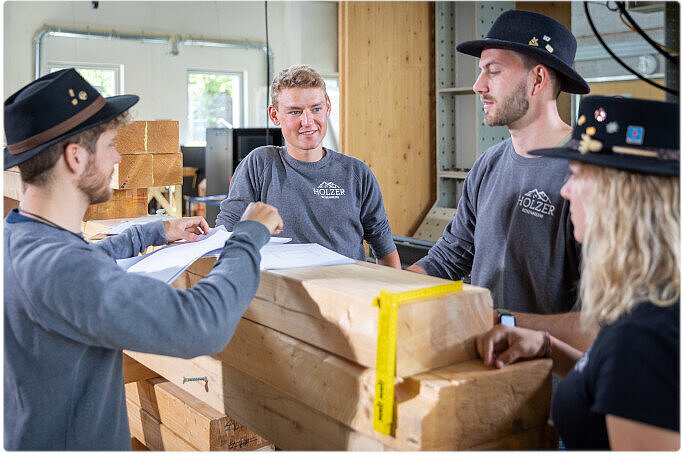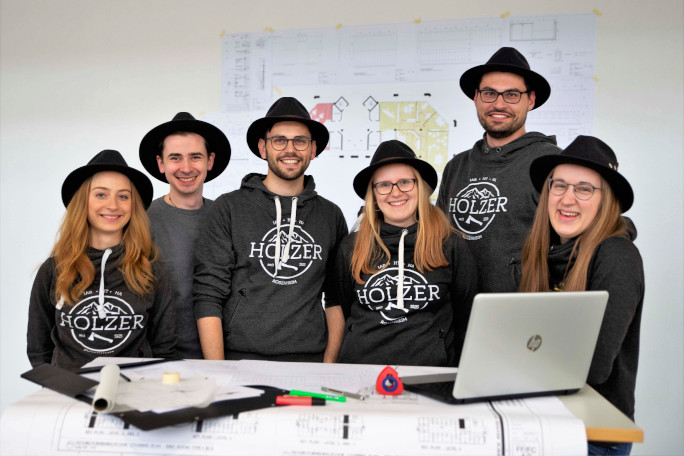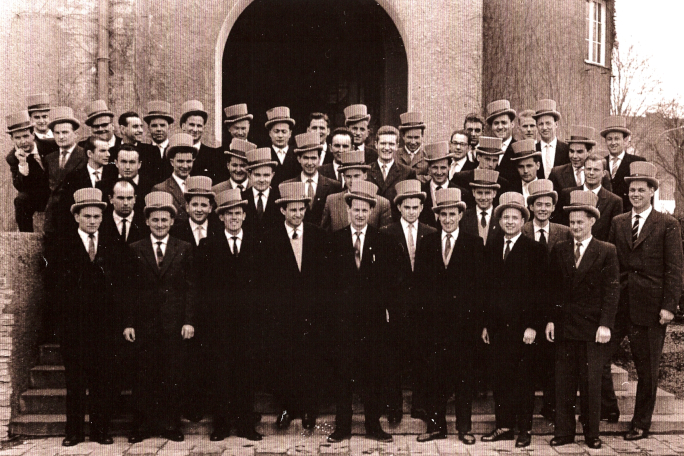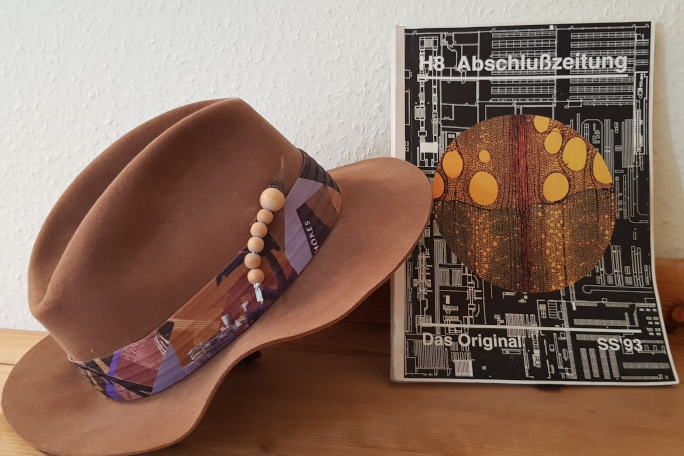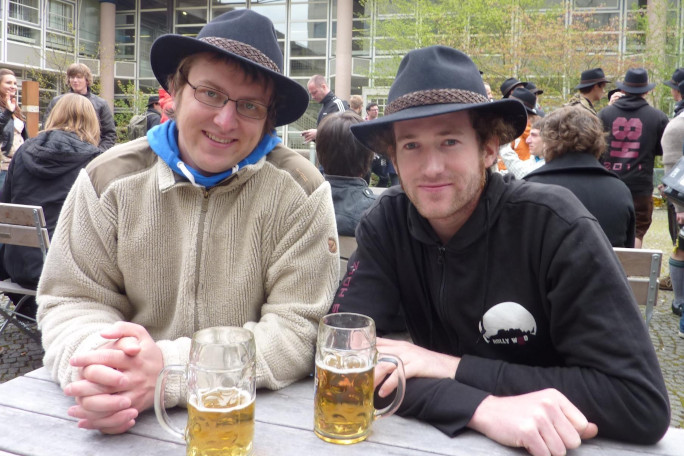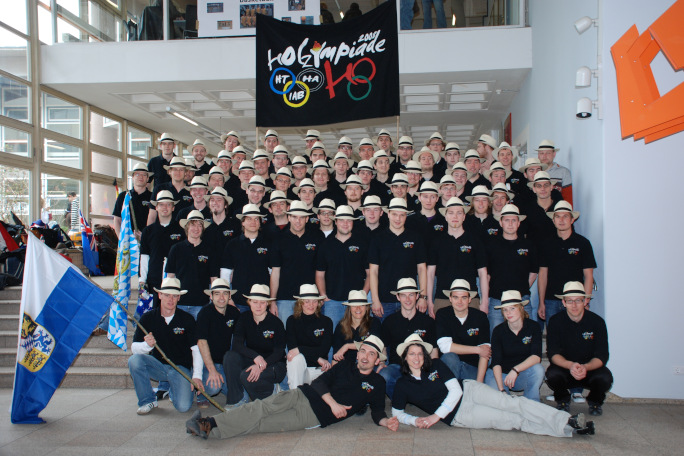On the Cutting Edge of Wood Technology
The scientific view of wood has changed dramatically. Today’s reflections go much deeper than viewing wood as simply a material for building solid construction, but envisioning the resource-saving capacities of wood and wood-processing. This comprehensive approach makes Rosenheim a unique location as a training, further education and research center for the entire industry. At the world-renowned Faculty of Wood Technology in Rosenheim, faculty and students explore advanced wood processing and manufacturing, materials/wood-based material design, product development and reliability testing, e.g. for furniture.
Professor Holly Ott, PhD, teaches production and supply chain management at TH Rosenheim. She completed her doctorate in electrical engineering in the United States (University of Virginia) and can draw on extensive experience in the international semiconductor industry from her work with MNCs in the USA, France and Singapore. She has taught operations, supply chain and quality management at the university level for the past ten years. As she explains, "All of our courses are increasingly viewed and taught as mutually dependent, sustainably networked processes of the wood-based bioeconomy. Particularly in the wood industry, we face multiple and difficult challenges in production and supply chain management."


Optimizing Work Flows in Wood Technology Industry
Ott works on projects involving the production, IT systems and the logistic networks for woodworking companies. German furniture, kitchen and door manufacturers are highly customized, allowing customers to select from a huge number of variations in color and design, and as a result, even a small manufacturer must handle literally millions of part combinations.
This presents challenges, not only for the production machines and configurations for "Batch-Size 1" production, but also for information and material flows. "We are working with SME manufacturers to understand how they manage these flows and the roles various IT-systems play. I also work with companies to simulate their production and inventory to find potential to become more ‘lean’ and to help them identify digitalization potential."
Further Challenges for Wood Technology
The logistics in the furniture industry also prove challenging, since the industry is plagued by high CO2 emissions, lack of drivers and damage to goods. As Ott explains, "Our new logistics concept is being developed to allow German furniture manufacturers to cooperate so that their nationwide deliveries can be coordinated to prevent empty backhauls and increased truck utilization, reducing the number of delivery tours and increasing direct deliveries."

Bioeconomy, Wood Technology and Bio-Based Materials at TH Rosenheim
TH Rosenheim has been providing education, further training, research and development and the transfer of expertise in trade and industry since 1925.
- The Faculty of Wood Technology and Construction focuses on the fields of wood technology, interior engineering and wood building. It consists of a team of 48 specialists. Professors and staff work in 22 state-of-the-art laboratories. Currently, around 1,000 students are trained as Rosenheim wood engineers in various fields.
- The Center for Bio-Based Materials (ZBM) stands for innovative wood utilization and sustainable management. With a research focus on sustainable wood utilization as well as the mechanical and chemical decomposition of raw materials, the ZBM aims to support the transition to a circular wood-based bioeconomy. A fibre-based view of the wood value production chain and its manifold materials and applications is a central aspect, with different methods of sustainability assessment complementing a systemic view of the circular wood-based bioeconomy. As part of the wood bioeconomy value chain, which includes wood, fibres, lignin, and material applications, product recycling is a largely closed system, which is mapped through national and international research activities.
- Extensive partnerships: TH Rosenheim relies on its strong industrial links with regional partners and institutes in the wood industry network “Holzcluster Rosenheim” and the state of Bavaria’s Forestry and Wood Cluster. Additionally, there is an extensive national and international network of long-standing industrial partnerships. In this cluster, all currently conceivable processes of wood treatment and processing are represented.
- Degree programs: TH Rosenheim offers various degree programs including the international Master’s Programme in Wood Technology (M.Sc.).
Forest Solutions: Major EU Project from the Perspective of a Colombian Researcher
Forest management is not only a crucial issue in Europe, but all over the world. Colombian researcher Lina Girata Sastoque came to Munich to pursue a master’s in Sustainable Resource Management at the Technical University of Munich (TUM). After completing her degree, she found a job opportunity at TH Rosenheim working in the Horizon Project ONEforest, a three-year EU project aimed at providing a support system for a common forest management. Girata Sastoque has found the position fascinating because it has provided her with the opportunity to apply the knowledge she acquired through her studies and work experience.
"During my chemical engineering studies in Colombia, I learned about the production process of paper industry and I have always been interested in the different application of wood as a raw material", explains Girata Sastoque. Throughout her master’s studies, she took courses on forestry raw materials and their utilization, material flow analysis, life cycle assessment, and analysis and modeling dynamic systems.
ONEforest: Uniting a Study of Wood Supply with Forest Management
This background not only gave Girata Sastoque the tools but also encouraged her to participate in ONEforest, modeling secure and sustainable wood flows through a dynamic value chain model. "Using this model, we assess the impact of the Forest Wood Value Chain on regional development quantified by a set of economic, environmental, and social indicators. I consider this a unique opportunity to combine my passion and my willingness to learn about sustainable wood supply with sustainable forest management."
ONEforest also offers the establishment of four Case Studies Regions to study forest ecosystem services and their corresponding value to stakeholders. The project will analyze the value of forest as a carbon sink, a source for non-timber products, a safety net against erosion, a water storage just to name a few. The Case Study Regions correspond to Europe’s biogeographical regions: Mediterranean forests, Alpine forests, Continental forests and Boreal/Hemiboreal forests.
The Horizon 2020 Project ONEforest
Project details: Officially launched on 1st June 2021 for three years
Consortium leader: TH Rosenheim
Scope: The project is implemented by 19 partners in 8 countries throughout Europe and funded with approx. €5.2 million through the EU framework program Horizon 2020.
Goal: To develop a multi-criteria decision support system for a common forest management with the aim of strengthening forest resilience, harmonizing stakeholder interests and ensuring sustainable wood flows.
Implementation: Within ONEforest, four Case Studies Regions will be established, following Europe’s biogeographical regions, which are Mediterranean forests, Alpine forests, Continental forests and Boreal/Hemiboreal forests
A Positive Working Environment
According to Girata Sastoque, working in an international project like ONEforest at TH Rosenheim has given her the opportunity to strengthen her communication and teamwork skills. She finds the working environment to be friendly and open, with colleagues offering personal support and engaging in close interaction to create a familiar working atmosphere.
The ONEforest core team based in Rosenheim consists of six team members combining expertise related to wood fiber composite technology, wood processing, material flow analysis and scenario development. Results from the ONEforest project are directly transferred by the multidisciplinary project team and inspire research projects at the Faculty of Wood Technology and Construction and the Center for Bio Based Materials at TH Rosenheim. Together, the team is working to strengthen forest resilience, harmonize stakeholder interests and thereby guarantee sustainable wood flows.



